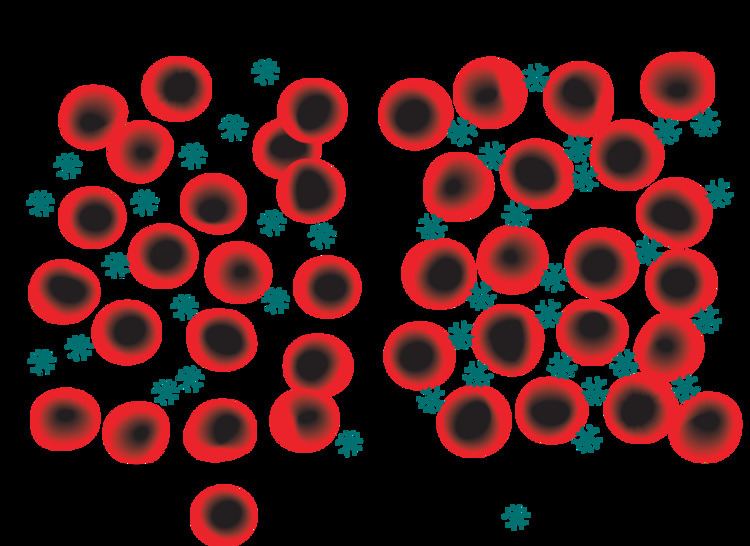Specialty hematology ICD-9-CM 283.0 eMedicine med/408 | ICD-10 D59.1 DiseasesDB 2949 MeSH D000744 | |
 | ||
Cold agglutinin disease is an autoimmune disease characterized by the presence of high concentrations of circulating antibodies, usually IgM, directed against red blood cells. It is a form of autoimmune hemolytic anemia, specifically one in which antibodies only bind red blood cells at low body temperatures, typically 28-31 °C.
Contents
It was first described in 1957.
Etiology
Cold agglutinin disease can be either primary (arising spontaneously) or secondary (a result of another pathology).
Pathophysiology
All individuals have circulating antibodies directed against red blood cells, but their concentrations are often too low to trigger disease (titers under 64 at 4 °C). In individuals with cold agglutinin disease, these antibodies are in much higher concentrations (titers over 1000 at 4 °C).
At body temperatures of 28-31 °C, such as those encountered during winter months, and occasionally at body temperatures of 37 °C, antibodies (generally IgM) bind to the polysaccharide region of glycoproteins on the surface of red blood cells (typically the I antigen, i antigen, and Pr antigens). Binding of antibodies to red blood cells activates the classical pathway of the complement system. If the complement response is sufficient, red blood cells are damaged by the membrane attack complex, an effector of the complement cascade. In the formation of the membrane attack complex, several complement proteins are inserted into the red blood cell membrane, forming pores that lead to membrane instability and intravascular hemolysis (destruction of the red blood cell within the blood vessels).
If the complement response is insufficient to form membrane attack complexes, then extravascular lysis will be favored over intravascular red blood cell lysis. In lieu of the membrane attack complex, complement proteins (particularly C3b and C4b) are deposited on red blood cells. This opsonization enhances the clearance of red blood cell by phagocytes in the liver, spleen, and lungs, a process termed extravascular hemolysis.
Individuals with cold agglutinin disease present with signs and symptoms of hemolytic anemia. Those with secondary agglutinin disease may also present with an underlying disease, often autoimmune.
Treatment
Treatment with rituximab has been described.
